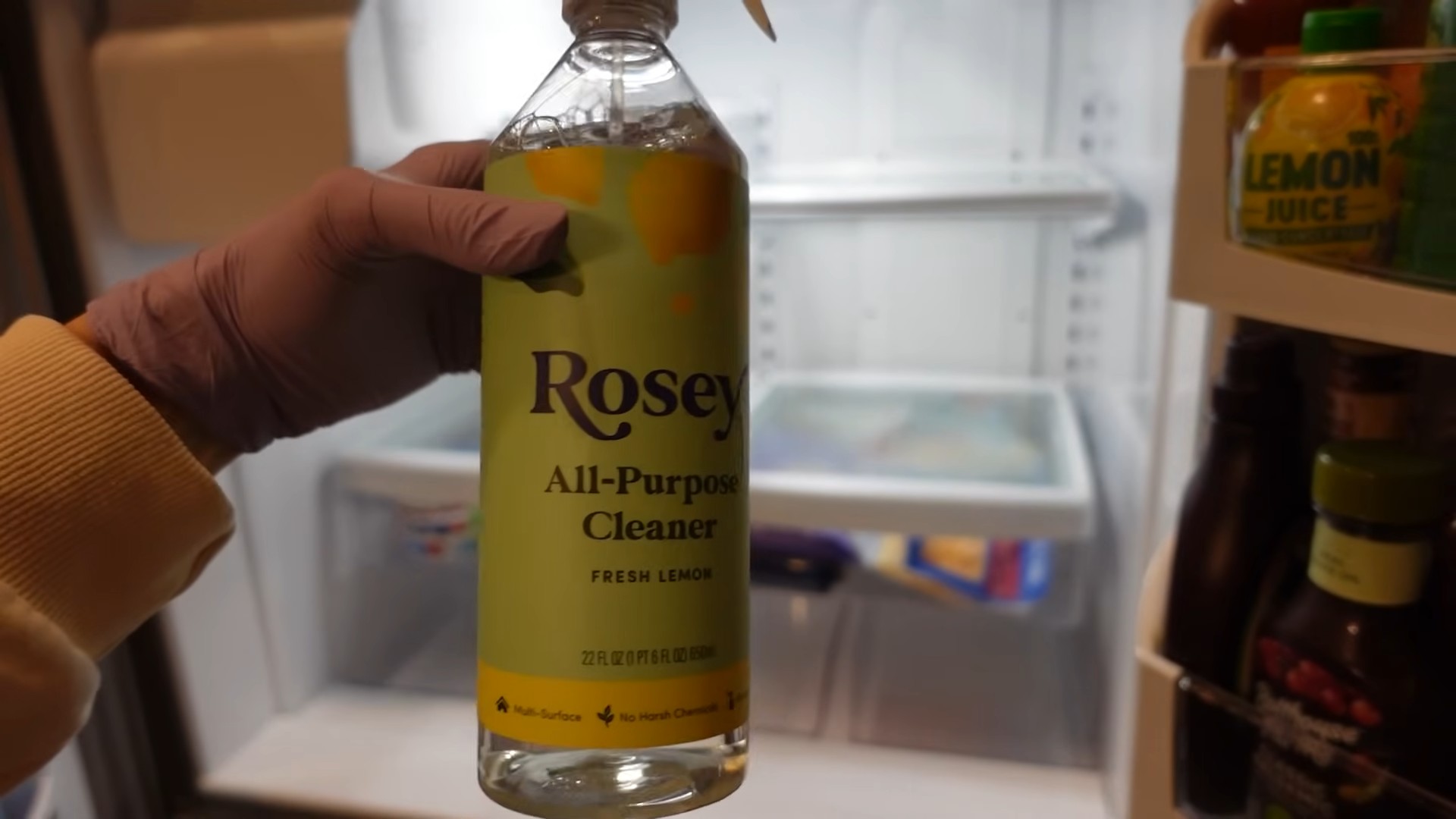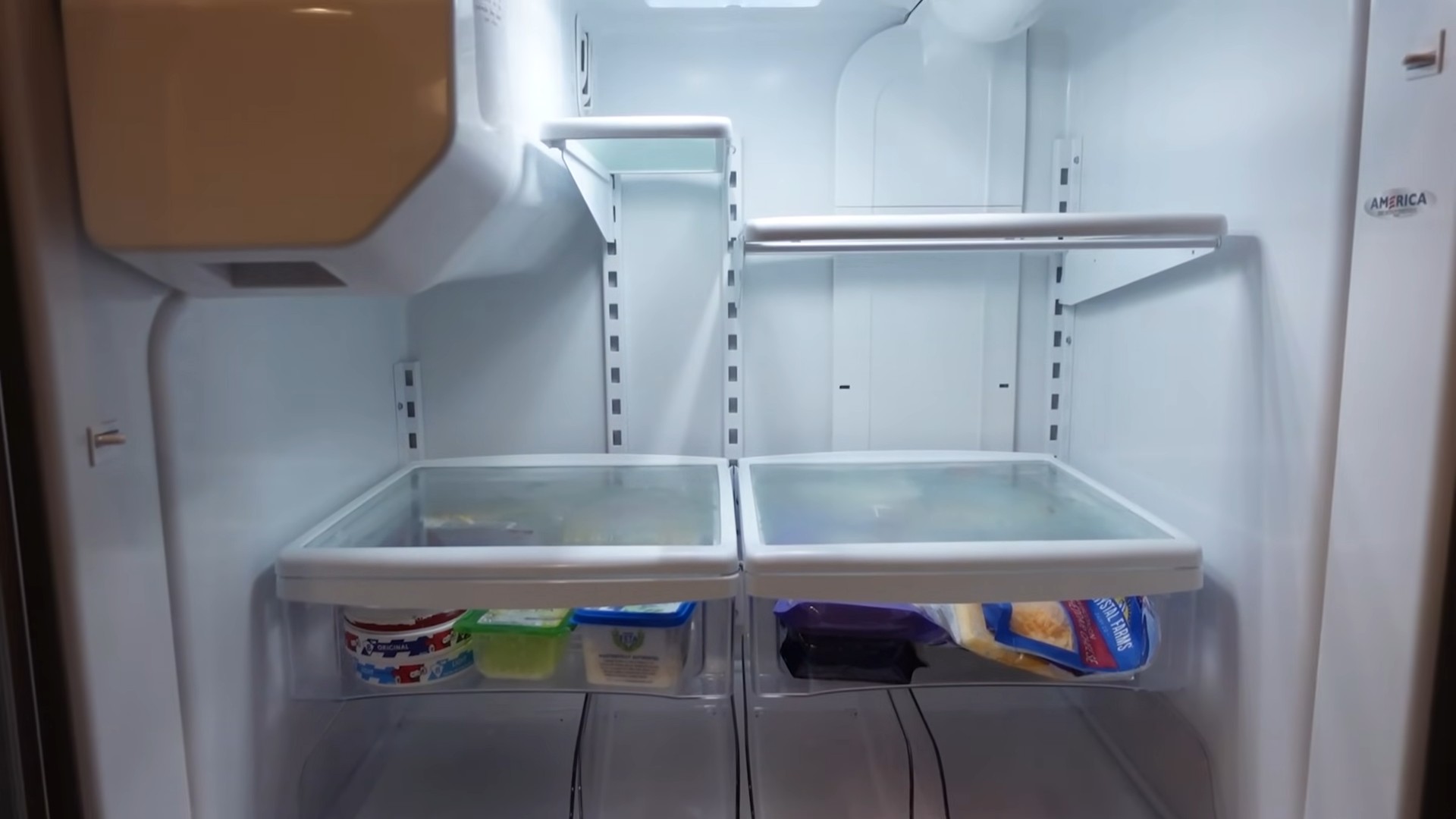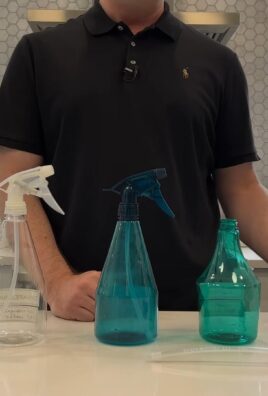Refrigerator cleaning hacks – who knew such a simple phrase could unlock a world of freshness and efficiency in your kitchen? Let’s be honest, tackling the fridge is often the chore we dread most. It’s a cold, cluttered abyss where forgotten leftovers lurk and mysterious spills solidify. But what if I told you that keeping your refrigerator sparkling clean doesn’t have to be a Herculean task?
For generations, maintaining a clean and organized food storage space has been crucial for health and well-being. From ancient root cellars to modern refrigerators, the principle remains the same: preserving food and preventing spoilage. Today, with our busy lives, quick and effective refrigerator cleaning hacks are more valuable than ever.
This article is your ultimate guide to transforming your fridge from a source of stress into a haven of freshness. We’ll explore simple, DIY tricks that will not only save you time and effort but also help you reduce food waste, save money, and create a healthier environment for you and your family. So, grab your cleaning supplies, and let’s dive into the world of refrigerator cleaning hacks that will leave your fridge sparkling and your life a little bit easier!

Growing Watermelons: A DIY Guide to Sweet Success!
Okay, watermelon lovers, let’s get real. There’s nothing quite like biting into a juicy, homegrown watermelon on a hot summer day. But the thought of growing your own can seem a little daunting, right? Don’t worry, I’m here to break it down for you. It’s totally achievable, even if you’re not a seasoned gardener. This guide will walk you through everything you need to know to grow watermelons that will make your taste buds sing!
Choosing the Right Watermelon Variety
First things first, let’s talk about watermelon varieties. Not all watermelons are created equal, and choosing the right one for your climate and space is crucial.
* Consider your climate: Some varieties thrive in shorter growing seasons, while others need a long, hot summer.
* Think about space: Bush varieties are perfect for smaller gardens, while vining varieties need plenty of room to sprawl.
* Personal preference: Do you prefer seedless or seeded? Red, pink, or yellow flesh? Smaller or larger melons?
Here are a few popular varieties to consider:
* Sugar Baby: A classic, small, and sweet watermelon that matures quickly. Great for shorter seasons.
* Crimson Sweet: A larger, oblong watermelon with a deep red flesh and excellent flavor.
* Black Diamond: A very large, dark green watermelon with a sweet, juicy red flesh. Needs a longer growing season.
* Bush Sugar Baby: A compact version of Sugar Baby, perfect for container gardening or small spaces.
* Yellow Doll: A unique watermelon with a bright yellow flesh and a sweet, honey-like flavor.
Once you’ve chosen your variety, it’s time to get started!
Preparing Your Garden Bed
Watermelons are heavy feeders, meaning they need a lot of nutrients to grow big and juicy. So, preparing your garden bed properly is essential.
* Sunlight: Watermelons need at least 6-8 hours of direct sunlight per day. Choose a spot in your garden that gets plenty of sun.
* Soil: Watermelons prefer well-drained, sandy loam soil with a pH between 6.0 and 6.8.
* Soil Testing: I highly recommend testing your soil before planting. You can purchase a soil testing kit at most garden centers or send a sample to your local agricultural extension office. This will tell you the pH of your soil and what nutrients it may be lacking.
* Amendments: Amend your soil with plenty of organic matter, such as compost, well-rotted manure, or leaf mold. This will improve drainage, aeration, and nutrient content.
* Raised Beds: If your soil is heavy clay or poorly drained, consider growing your watermelons in raised beds. This will improve drainage and prevent root rot.
Starting Your Watermelon Seeds
You can either direct sow your watermelon seeds in the garden or start them indoors. Starting them indoors gives them a head start, especially in cooler climates.
* When to Start: Start your seeds indoors about 4-6 weeks before the last expected frost.
* Containers: Use peat pots or biodegradable pots to avoid disturbing the roots when transplanting.
* Soil: Use a seed-starting mix that is light and well-draining.
* Planting: Plant the seeds about 1 inch deep.
* Watering: Keep the soil moist but not soggy.
* Warmth: Watermelon seeds need warmth to germinate. Use a heat mat or place the pots in a warm location.
* Light: Once the seedlings emerge, provide them with plenty of light. Use grow lights or place them in a sunny window.
Transplanting Your Watermelon Seedlings
Once the danger of frost has passed and the soil has warmed up to at least 70°F (21°C), it’s time to transplant your watermelon seedlings into the garden.
* Hardening Off: Before transplanting, harden off your seedlings by gradually exposing them to outdoor conditions for a week or two. Start by placing them in a sheltered spot for a few hours each day, gradually increasing the amount of time they spend outdoors.
* Spacing: Space your watermelon plants according to the variety. Bush varieties can be spaced 2-3 feet apart, while vining varieties need 4-6 feet of space.
* Planting: Dig a hole that is slightly larger than the root ball of the seedling. Gently remove the seedling from the pot and place it in the hole. Backfill with soil and water thoroughly.
* Mulching: Mulch around the plants with straw or hay to help retain moisture, suppress weeds, and keep the soil warm.
Caring for Your Watermelon Plants
Watermelons need consistent care to thrive. Here’s what you need to do:
* Watering: Water deeply and regularly, especially during hot, dry weather. Water at the base of the plant to avoid wetting the foliage, which can lead to fungal diseases.
* Fertilizing: Fertilize your watermelon plants every 2-3 weeks with a balanced fertilizer. You can also use a fertilizer specifically formulated for melons.
* Weeding: Keep the garden bed free of weeds, which can compete with your watermelon plants for nutrients and water.
* Pruning: Pruning is optional, but it can help improve air circulation and fruit production. Remove any suckers (small shoots that grow from the base of the plant) and any dead or diseased leaves.
* Pollination: Watermelons need to be pollinated to produce fruit. If you’re not seeing any fruit set, you may need to hand-pollinate the flowers. To do this, use a small paintbrush to transfer pollen from the male flowers to the female flowers. The female flowers have a small, immature watermelon at the base.
* Pest Control: Keep an eye out for pests such as aphids, squash bugs, and cucumber beetles. You can control these pests with insecticidal soap or neem oil.
* Disease Control: Watermelons are susceptible to fungal diseases such as powdery mildew and anthracnose. Prevent these diseases by providing good air circulation, avoiding overhead watering, and applying a fungicide if necessary.
Protecting Your Watermelons
As your watermelons grow, you may need to protect them from pests and diseases.
* Ground Rot: To prevent ground rot, place a piece of cardboard or straw under each watermelon to keep it off the soil.
* Sunscald: If your watermelons are exposed to intense sunlight, they may develop sunscald. Protect them by shading them with shade cloth or by covering them with leaves.
* Animals: Raccoons, squirrels, and other animals love watermelons. Protect your watermelons by covering them with netting or by using a repellent.
Harvesting Your Watermelons
Knowing when to harvest your watermelons is key to getting that perfect, sweet flavor. It’s not always easy to tell, but here are a few things to look for:
* Days to Maturity: Check the seed packet or plant tag for the days to maturity. This will give you a general idea of when your watermelons will be ready to harvest.
* Tendril: The tendril closest to the watermelon should be brown and dry.
* Ground Spot: The ground spot (the area where the watermelon rests on the ground) should be yellow or cream-colored.
* Thump Test: Give the watermelon a thump. A ripe watermelon will sound hollow.
* Rind: The rind should be dull and waxy, not shiny.
Once you’ve determined that your watermelon is ripe, use a sharp knife to cut it from the vine, leaving a few inches of stem attached.
Enjoying Your Homegrown Watermelon
Congratulations! You’ve successfully grown your own watermelons. Now it’s time to enjoy the fruits (or rather, the melons) of your labor.
* Cooling: Chill your watermelon in the refrigerator for a few hours before serving.
* Cutting: Cut the watermelon into wedges or cubes.
* Serving: Serve your watermelon as a refreshing snack or dessert.
* Recipes: Get creative and use your watermelon in salads, smoothies, or even grilled watermelon steaks!
Troubleshooting Common Watermelon Problems
Even with the best care, you may encounter some problems while growing watermelons. Here are a few common issues and how to fix them:
* Poor Germination: If your watermelon seeds aren’t germinating, make sure the soil is warm enough and that you’re not overwatering.
* Blossom End Rot: Blossom end rot is caused by a calcium deficiency. Amend your soil with calcium before planting and water regularly.
* Lack of Fruit Set: If your watermelon plants are producing flowers but not fruit, it could be due

Conclusion
So, there you have it! Transforming your refrigerator from a biohazard zone to a sparkling, fresh-smelling haven doesn’t require harsh chemicals or hours of scrubbing. This DIY refrigerator cleaning hack is a game-changer for anyone looking to maintain a clean and healthy kitchen environment with minimal effort and maximum impact.
Why is this a must-try? Because it’s effective, eco-friendly, and incredibly budget-friendly. Forget expensive cleaning products filled with questionable ingredients. This method utilizes common household items like baking soda, vinegar, and lemon – ingredients you likely already have on hand. The combination of these natural powerhouses tackles stubborn stains, neutralizes odors, and leaves your refrigerator smelling clean and revitalized.
Beyond the basic method, there are plenty of ways to customize this DIY refrigerator cleaning hack to suit your specific needs and preferences. For instance, if you’re dealing with particularly stubborn stains, create a paste of baking soda and water and let it sit on the affected area for a few minutes before wiping it away. For an extra boost of freshness, add a few drops of your favorite essential oil (lemon, grapefruit, or tea tree are excellent choices) to your cleaning solution.
Another variation involves using a microfiber cloth instead of a regular sponge. Microfiber cloths are incredibly absorbent and effective at trapping dirt and grime, leaving surfaces streak-free. You can also use an old toothbrush to scrub hard-to-reach areas like the corners of shelves and door compartments.
Consider using activated charcoal to absorb lingering odors. Place a small bowl of activated charcoal in your refrigerator after cleaning to keep it smelling fresh for longer. You can also use coffee grounds in a similar way.
But the real beauty of this DIY refrigerator cleaning hack lies in its simplicity and effectiveness. It’s a quick and easy way to maintain a clean and organized refrigerator, which not only improves the overall hygiene of your kitchen but also helps to extend the shelf life of your food. A clean refrigerator means less food waste, which translates to saving money and reducing your environmental impact.
We wholeheartedly encourage you to give this DIY refrigerator cleaning hack a try. You’ll be amazed at how easy it is to achieve a sparkling clean refrigerator without resorting to harsh chemicals or spending a fortune on cleaning products.
Once you’ve experienced the magic of this DIY method, we’d love to hear about your results! Share your tips, tricks, and variations in the comments below. Let’s create a community of clean refrigerator enthusiasts and help each other maintain healthy and happy kitchens. Don’t forget to share this article with your friends and family so they can benefit from this amazing DIY refrigerator cleaning hack too! Let’s all work together to keep our refrigerators clean, fresh, and food-safe.
Frequently Asked Questions (FAQ)
Q: How often should I clean my refrigerator?
A: Ideally, you should give your refrigerator a thorough cleaning at least once a month. However, spot cleaning spills and wiping down shelves as needed will help prevent buildup and keep your refrigerator cleaner for longer. A quick wipe-down once a week can make a big difference.
Q: What’s the best way to remove stubborn stains from my refrigerator shelves?
A: For stubborn stains, create a paste of baking soda and water. Apply the paste to the stain, let it sit for 10-15 minutes, and then scrub gently with a sponge or cloth. You can also try using a solution of equal parts vinegar and water. For particularly tough stains, you might need to repeat the process or use a slightly more abrasive cleaner, but always test it in an inconspicuous area first.
Q: How can I get rid of bad odors in my refrigerator?
A: Baking soda is a great odor absorber. Place an open box of baking soda in your refrigerator to neutralize odors. You can also use activated charcoal or coffee grounds. Make sure to remove any spoiled food promptly, as this is often the source of unpleasant smells. Thoroughly cleaning your refrigerator with a vinegar and water solution can also help eliminate lingering odors.
Q: Is it safe to use vinegar to clean my refrigerator?
A: Yes, vinegar is a safe and effective natural cleaner for refrigerators. It’s a mild acid that can help dissolve grease and grime. However, it’s important to dilute vinegar with water before using it, as undiluted vinegar can be too harsh and may damage some surfaces. A solution of equal parts vinegar and water is generally safe for most refrigerator surfaces.
Q: Can I use bleach to clean my refrigerator?
A: While bleach is a powerful disinfectant, it’s generally not recommended for cleaning refrigerators. Bleach can be harsh and may damage some surfaces. It can also leave behind a strong odor that can be absorbed by food. If you choose to use bleach, dilute it heavily with water and rinse thoroughly with clean water afterwards. Ensure the refrigerator is well-ventilated to avoid inhaling fumes. Natural alternatives like vinegar and baking soda are generally safer and more effective for refrigerator cleaning.
Q: What’s the best way to clean the door seals of my refrigerator?
A: The door seals are often overlooked but can accumulate dirt and grime. Use a damp cloth or sponge to wipe down the seals regularly. For stubborn dirt, use a solution of mild dish soap and water. Be sure to dry the seals thoroughly after cleaning to prevent mold and mildew growth. An old toothbrush can be helpful for cleaning hard-to-reach areas.
Q: How can I prevent food from spoiling in my refrigerator?
A: Proper food storage is key to preventing spoilage. Store leftovers in airtight containers and label them with the date. Keep raw meat and poultry on the bottom shelf to prevent drips from contaminating other foods. Organize your refrigerator so that older items are in front and newer items are in the back. Check expiration dates regularly and discard any expired or spoiled food. Maintaining the correct refrigerator temperature (between 35°F and 38°F) is also crucial for preventing food spoilage.
Q: What are some eco-friendly alternatives to traditional refrigerator cleaning products?
A: Besides baking soda and vinegar, lemon juice is another excellent eco-friendly cleaner. It has natural antibacterial properties and leaves a fresh scent. You can also use castile soap, which is a gentle and versatile cleaner made from plant oils. Avoid using harsh chemicals and disposable wipes, which can be harmful to the environment.
Q: How do I clean the ice maker and water dispenser in my refrigerator?
A: Refer to your refrigerator’s user manual for specific instructions on cleaning the ice maker and water dispenser. Generally, you’ll need to empty the ice bin and clean it with a mild soap and water solution. For the water dispenser, you can run a solution of vinegar and water through the system to flush out any buildup. Replace the water filter regularly according to the manufacturer’s recommendations.
Q: My refrigerator has a built-in water filter. How often should I replace it?
A: Most refrigerator manufacturers recommend replacing the water filter every six months, or sooner if you notice a decrease in water flow or a change in water taste. Refer to your refrigerator’s user manual for specific instructions on how to replace the water filter. Replacing the water filter regularly ensures that you’re drinking clean and fresh water.




Leave a Comment